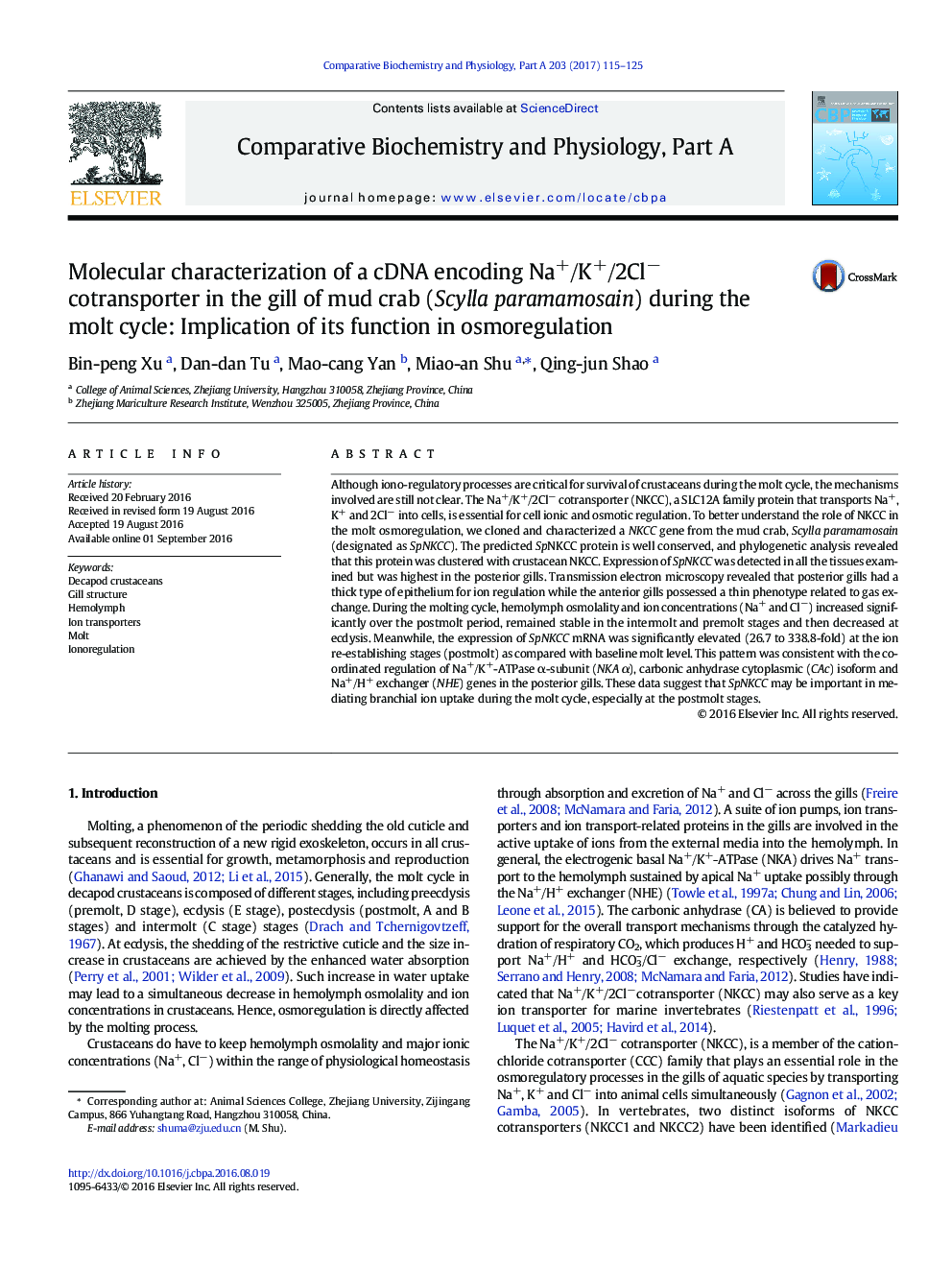| Article ID | Journal | Published Year | Pages | File Type |
|---|---|---|---|---|
| 8318369 | Comparative Biochemistry and Physiology Part A: Molecular & Integrative Physiology | 2017 | 11 Pages |
Abstract
Although iono-regulatory processes are critical for survival of crustaceans during the molt cycle, the mechanisms involved are still not clear. The Na+/K+/2Clâ cotransporter (NKCC), a SLC12A family protein that transports Na+, K+ and 2Clâ into cells, is essential for cell ionic and osmotic regulation. To better understand the role of NKCC in the molt osmoregulation, we cloned and characterized a NKCC gene from the mud crab, Scylla paramamosain (designated as SpNKCC). The predicted SpNKCC protein is well conserved, and phylogenetic analysis revealed that this protein was clustered with crustacean NKCC. Expression of SpNKCC was detected in all the tissues examined but was highest in the posterior gills. Transmission electron microscopy revealed that posterior gills had a thick type of epithelium for ion regulation while the anterior gills possessed a thin phenotype related to gas exchange. During the molting cycle, hemolymph osmolality and ion concentrations (Na+ and Clâ) increased significantly over the postmolt period, remained stable in the intermolt and premolt stages and then decreased at ecdysis. Meanwhile, the expression of SpNKCC mRNA was significantly elevated (26.7 to 338.8-fold) at the ion re-establishing stages (postmolt) as compared with baseline molt level. This pattern was consistent with the coordinated regulation of Na+/K+-ATPase α-subunit (NKA α), carbonic anhydrase cytoplasmic (CAc) isoform and Na+/H+ exchanger (NHE) genes in the posterior gills. These data suggest that SpNKCC may be important in mediating branchial ion uptake during the molt cycle, especially at the postmolt stages.
Related Topics
Life Sciences
Biochemistry, Genetics and Molecular Biology
Biochemistry
Authors
Bin-peng Xu, Dan-dan Tu, Mao-cang Yan, Miao-an Shu, Qing-jun Shao,
